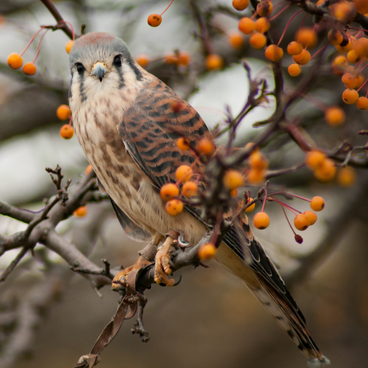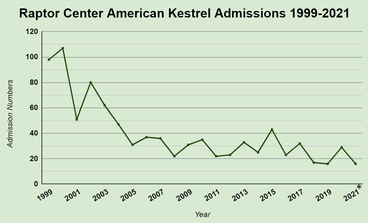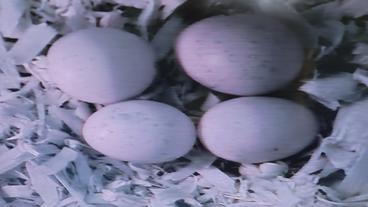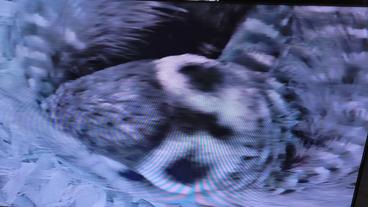Our work at The Raptor Center rehabilitating birds of prey goes beyond just the individual bird. Yes, our goal is to get as many of these birds rehabilitated and back to the wild as possible. But as we do this, we are also collecting data that informs us about the world and environment around us. Each individual bird adds a bit more information and gives us insight into their populations and the health of our ecosystems.

For example, over the years we have seen a persistent decline in the number of American kestrels admitted to our clinic. In the late 90s, we would admit around or over 100 kestrel patients into our clinic each year. But in recent years we are admitting less than half that.

This downward trend is not unique to our center. In fact, the data we are collecting from our clinic mirrors the larger picture others are seeing across North America. The American kestrel is in decline.
Scientists can't point to one single factor for this decline, and as a migratory species with a wide range across the Americas, it is likely a variety of issues. One factor is loss of habitat. The American kestrel prefers to hunt in open areas like grasses and prairie, but then nests in cavities such as those in old trees. Land development and our changing land use can impact their ability to find suitable hunting and nesting grounds. Additionally, these birds hunt small mammals and insects as part of their diet, making them susceptible to both pesticide use and rodenticide (rodent poison) use. And while the American kestrel is a fierce predator, they still fall prey to other animals.
While there isn't one single factor causing their decline, there are several ways you can give this charismatic falcon a better chance to thrive:
- Leave dead trees or tree snags when safe to do so to create more nesting habitat.
- Keep your cats inside, on a leash, or in an enclosure. Not only do cats kill large numbers of birds, but also many mammals, reptiles, and insects that our native species need to survive. Leaving cats outdoors adds additional stress to our environment.
- Plant a diversity of native and local plant species. This helps all species, from local insect populations to the predators that rely on them.
- Avoid the use of pesticides and rodenticides. These chemicals reduce prey populations and can easily find their way up the food chain, causing predators like kestrels to become sick, weak, or to die.
- Provide nesting opportunities for kestrels by building nest boxes. With fewer natural cavities to use, you can lend a hand by putting up a human-made nesting box. This helps kestrels and allows you to enjoy their presence as well! Click to learn how to build a nest box and where to put it.
Observing a nest box can be a fulfilling activity and a great way to learn more about kestrels. Raptor Center board member and volunteer Todd shared some photos from the webcam installed in the nest box he built. He's currently watching and waiting for the four eggs laid this year to hatch, a testament to the success of creating nesting sites for kestrels.

